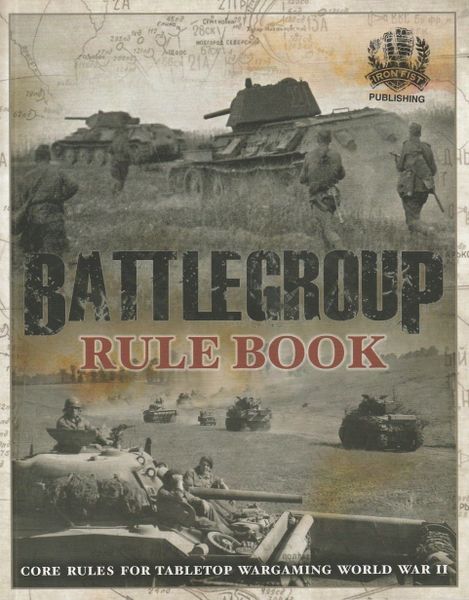Battlegroup: Rule Book (2013) Board Game
Battlegroup: Rule Book is a wargame based on World War II, focusing on realistic and historically accurate battles. It was released in 2013 by designer David Pentland and published by Iron Fist Publishing and PSC Games. The game is designed for 2 players and has a runtime of around 120 minutes. Players take on the roles of military commanders, strategizing and battling it out on the tabletop.
Game Components of Battlegroup: Rule Book
How To Setup Battlegroup: Rule Book
To set up Battlegroup, players first determine the size of the game, which can range from platoon to battalion size. Each player rolls a number of D6 dice (1D6 for platoon-sized games up to 4D6 for battalion-sized games) plus the number of officers they have, to determine the number of orders available for their force. Players then assign Battle Rating (BR) values to their units, which are totalled to give an overall BR value for the battlegroup. The battlefield is set up according to the scenario, and units are deployed accordingly.
Gameplay Mechanics and Game Objective
Mechanics:
Game Objective:
The objective is to maintain your battlegroup’s effectiveness by managing orders, morale, and unit casualties. The game ends when the total value of Battle Rating counters collected exceeds the initial BR value, prompting senior command to issue the order to break off.
Player Experience
Battlegroup offers a dynamic and flexible gameplay experience with a strong focus on strategic planning and adaptability. Players must carefully manage their orders and reaction orders to disrupt their opponent’s plans. The game simulates the uncertainties of war through its mechanics, such as the variable number of orders available each turn and the impact of casualties on unit morale. While some players might find certain rules simplistic or game-like rather than simulation-oriented, the system is designed to be fast-paced and fun, allowing for easy adaptation with house rules.
Pros
Cons
Personal Thoughts on Battlegroup: Rule Book
Battlegroup is ideal for players looking for a balanced mix of strategy and fast-paced action in their World War II wargames. It is particularly suitable for those who enjoy the flexibility of reaction orders and the challenge of managing limited resources. While it may lean more towards being a ‘game’ rather than a strict simulation, it offers a period feel and is highly adaptable, making it a great choice for both casual and experienced wargamers. However, players seeking a more detailed simulation might need to implement additional house rules to enhance the experience.
We are supported by our audience. When you purchase through links on our site, we may earn an affiliate commission, at no extra cost for you. Learn more.

